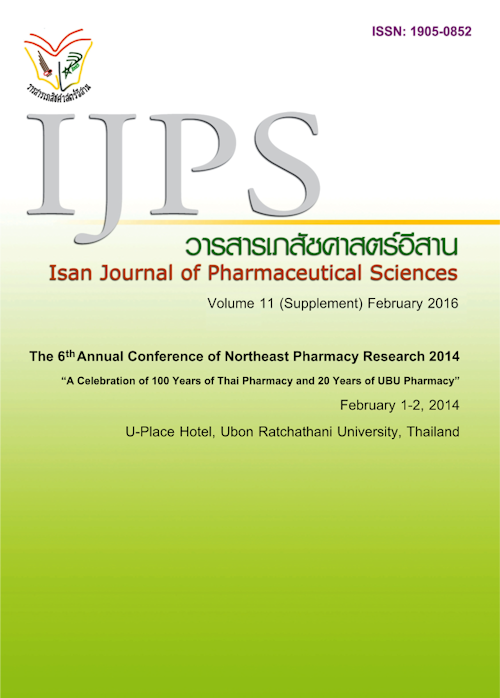Study on Optimal Condition for Salmonella spp. Detection in Drinking Water by Polymerase Chain Reaction
Main Article Content
Abstract
Introduction: Contamination of Salmonella species in foods and water is a major problem affecting a worldwide industry and hospitalization. Generally, detection of Salmonella in drinking water is widely performed by conventional culture method. The method is laborious and requires 3-7 days to obtain results. However, the prevention and control of infection usually depend on rapidity, sensitivity and accuracy of diagnostic method. Therefore, rapid, easy and accurate detection method would be greatly developed to detect the contamination of Salmonella in foods and drinking water. The objectives of this study were to determine the effectiveness of different DNA extraction methods and enrichment media for detection of Salmonella spp. contamination in drinking water by Polymerase Chain Reaction (PCR) technique. Material and Methods: In a pre-enrichment step, Salmonella typhi and Salmonella typhimurium are cultured in 3 different pre-enrichment media including Luria broth (LB), Selenite cystine broth (SCB) or Tetrathionate broth (TTB) at 37°C overnight. Then DNA extractions were performed by 3 different methods including boiling method, phenol-chloroform method or lysis-buffer method. The specificity of PCR detection was determined using two sets of primers including hilA and P1-M13. Escherichia coli strain was used as a negative control. Sensitivity of PCR detection of Salmonella spp. in drinking water was performed using the boiling out method for DNA extraction. Results: The result showed that both of the DNA extraction methods and the type of pre-enrichment media did not have any effect on the specificity of PCR detection of Salmonella spp. The PCR detection provided positive detection for Salmonella spp. while the negative results were obtained for E. coli. The sensitivity for S. typhi and S. typhimurium detection using hilA primer set was detected at the lowest level of 1CFU/ml in both strains. In contrast, the sensitivity for S. typhi and S. typhimurium detection was found at 105 and 104 CFU/ml, respectively, when using P1-M13 primer set. In addition, it was found that S. typhi and S. typhimurium with the concentration of 1CFU/ml in drinking water could be detected when the pre-enrichment step was performed at 37°C overnight. Conclusion: The results demonstrated that PCR technique could be further developed as a rapid detection method for screening of Salmonella contamination in drinking water. However, the pre-enrichment media and DNA extraction methods were not revealed the significant difference in PCR detection step. The boiling out method for DNA extraction was recommended because of its simplicity and low cost.
Article Details
In the case that some parts are used by others The author must Confirm that obtaining permission to use some of the original authors. And must attach evidence That the permission has been included


